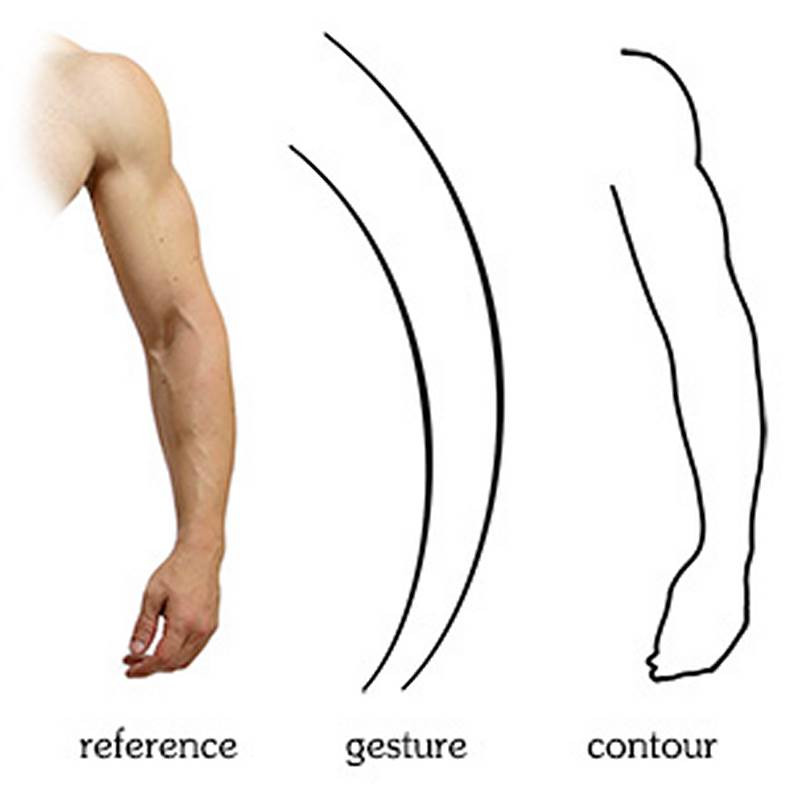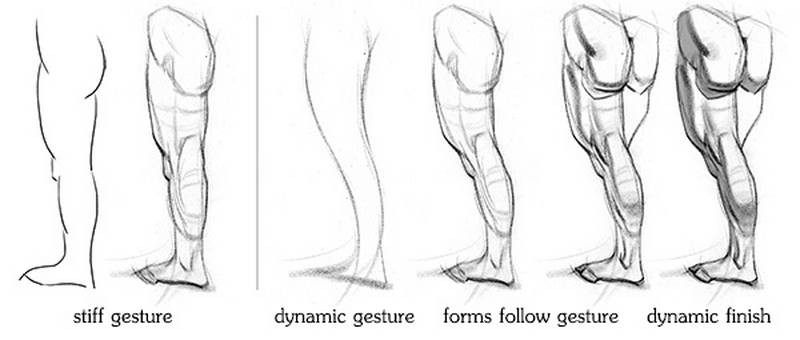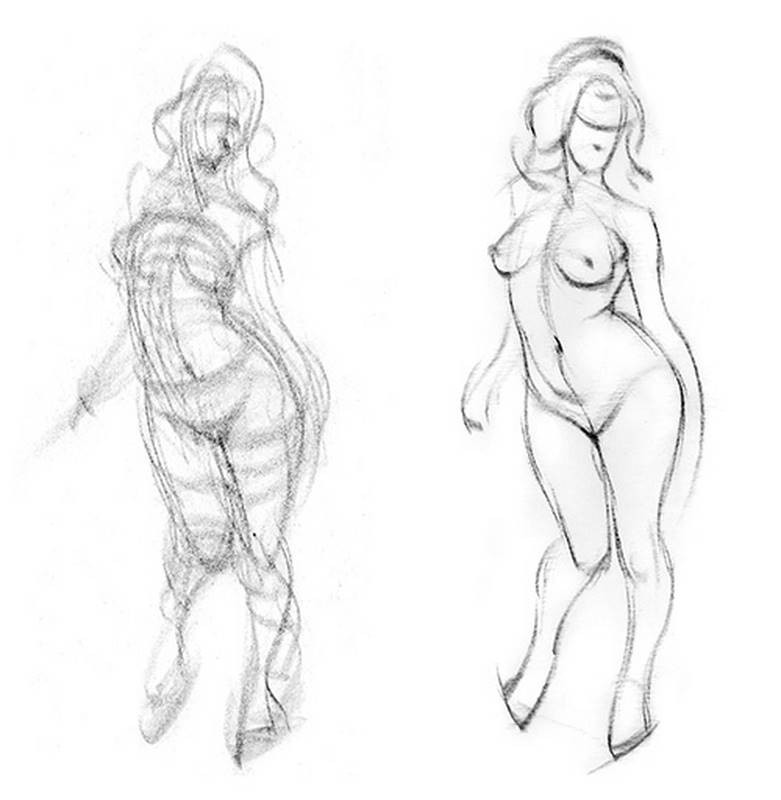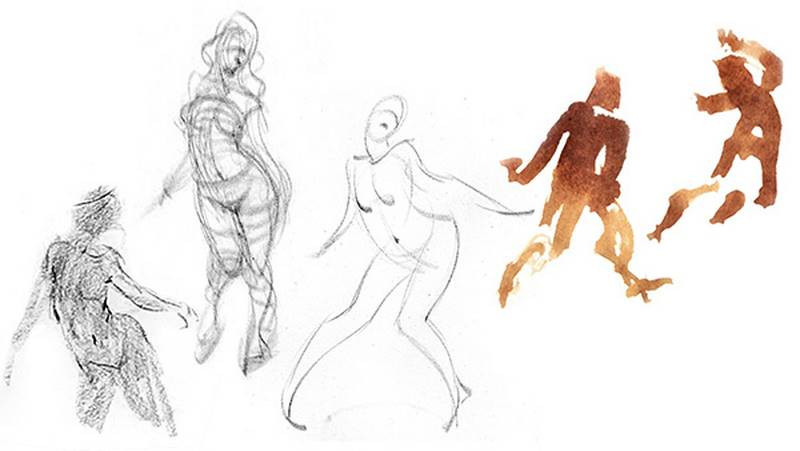Hello welcome to Proko, my name is Stan Prokopenko. Still working on the Anatomy series, but in the mean time I’ll answer some of the questions you guys have been asking me. This time I’ll focus on the questions about gesture. Ok, let’s jump right in.
Can I skip Gesture?
When I am practicing my figure and gesture drawing I find it easier to start with a bean instead of a stick figure to point out the proportions and the line of action. Should I practice the stick figure or should I stick with the bean and skip the stick figure part? YouTube: loliman777
If by "stick figure" you mean gesture, then no. I would not skip it. Gesture is the most important part of a figure drawing. If you struggle with it, that means you don't understand it or you need to practice it more. If you don't understand it, then you need to study it until you do understand it. Practice to improve your weakness rather than staying comfortable and reinforcing your strengths. I would re-watch the gesture video and pay very close attention. You can't think of it like a stick figure. gesture drawings are very simplified lines, so they might resemble stick figure, but they're not. They're motion lines. They show the flow of the pose. Try to REALLY understand the purpose of gesture. It's not something to skim through quickly. It's something that requires your full attention.
So, to answer your question, No, don't skip gesture. And don't think of it as a stick figure.
Gesture vs Contour
Hi Stan! I still have trouble trying to find and draw the C and S curves under 30 seconds… I have a hard time trying to grasp the whole concept of not relying on the contours, but I head can't grasp the logic of it. twitter.com/sfried0
Well, the logic is that contour explains all the outer details of all the smaller forms as well as the larger forms. Gesture just explains the flow between all these forms. So, that’s the logic of it. But it can be hard to visualize and put into practice unless you see it, so if you didn't get that, don't worry, I’m going to show an example. And btw, if you can’t do it in 30 seconds yet, that’s fine. Do it in a minute or even 2 minutes, as long as you’re not adding time just to add more detail.
So, you’ll hear me saying to use C curves, S curves, or straights to find the gesture of the pose. I’m NOT talking about constructing the contour with C S and straight lines. C curves for the hips, C curve for the quads, S curve for the back of the leg, and so on... See how I’m using c and s curves, but the end result still looks stiff! That’s because those individual lines are not the gesture of the leg. That’s still contour even though you’re using C curves, S curves and straight lines... When I say, find the gesture, I mean a flow through the forms, not the contour of each individual form..
So, a flow through the whooole leg indicated by one s curve. Now I can go back and add contour lines on top of this. even use some straight lines in the knee and tendon areas.. And after I’ve added all these details, the leg still looks dynamic. That’s because all those details follow the main flow. Whereas these contour lines, even though they’re simplified, are stif.
THAT is the gesture.
It’s not the outlines, no matter how curvy you make them. The outlines themselves don’t create a dynamic drawing. It’s how all those outlines work together to create a flow. You have to look at the whole pose to make it look dynamic. Not the individual parts.
Gesture with Scribbly Lines
I am currently studying from Kimon Nicholaides' book 'Natural way to draw'. He says to draw the gesture in continuous scribbly lines and your approach is the one with minimal lines just enough to express the motion and volume. I don't know which one to follow and if both are really similar or totally different ways of expressing gesture. Sonal Prabhune
Hi Sonal, I think both methods are fine as long as you are searching for the gesture. Of course I prefer the way I showed, that is why I show it. The scribbly line method is a quick way of getting an idea on paper without worrying about line quality. It is more about feeling and that is a good thing. But you need to remember that this is just a beginning. You still need to be able to make those scribbly line drawings into something more developed. You can put tracing paper over them and clean them up a little if you want.
One reason I don't prefer the scribbly lines is because if you do it too much you might develop a habit of using messy lines. I like each stage of my drawing to look good. But everyone has their preference, so I suggest you give both a serious effort (a few weeks at least) and decide for yourself.
Glenn Vilppu sometimes shows how to do gesture drawings using the side of the pencil (shown below). He finds gesture using tone. Marshall Vandruff even suggested dipping newspaper in ink during our gesture critique video (shown below). All this works fine as long as you're looking for the motion. Remember the important part of all these methods. The materials and the line type are just techniques. The important part is the gesture itself. The body language, motion, idea, story... If you accurately capture the gesture with scribbly lines, then that's fine.
Eventually though, I think you need to take your quicksketch drawings further. As you get good at identifying the motion of the pose, start adding some anatomical forms. It's great if you can capture the gesture in a 30 second scribble, but what practical purpose does that have on it's own? Not much. You need to be able keep that gesture all the way to the end of a longer figure drawing. This is actually a very common problem. We'll start with a dynamic simple gesture layin. And after we add all the structure and the details, the fluidity is gone. We’ve lost the gesture in all the details and the pose ends up being stiff again. That's the main reason I recommend practicing to exaggerate gesture. Cause once you add the structure, you're gonna lose some of that gesture.
So, back to the point. Eventually you need to take your quicksketches further. Spend 5-10 minutes on a single pose. Start with a light gesture layin and then add the anatomical details on top and make sure that the gestural flow is still there when you're done.
***That’s all for today. If you haven't checked out the Premium Figure Drawing course yet, start going through those videos before the anatomy course starts. It’s good to have the basics covered going into anatomy.
Also, I’m releasing the Figure course as a 5 disc DVD set, very soon. So look out for that!
Alright, I hope this helped with some of your concerns. Good luck everybody!






